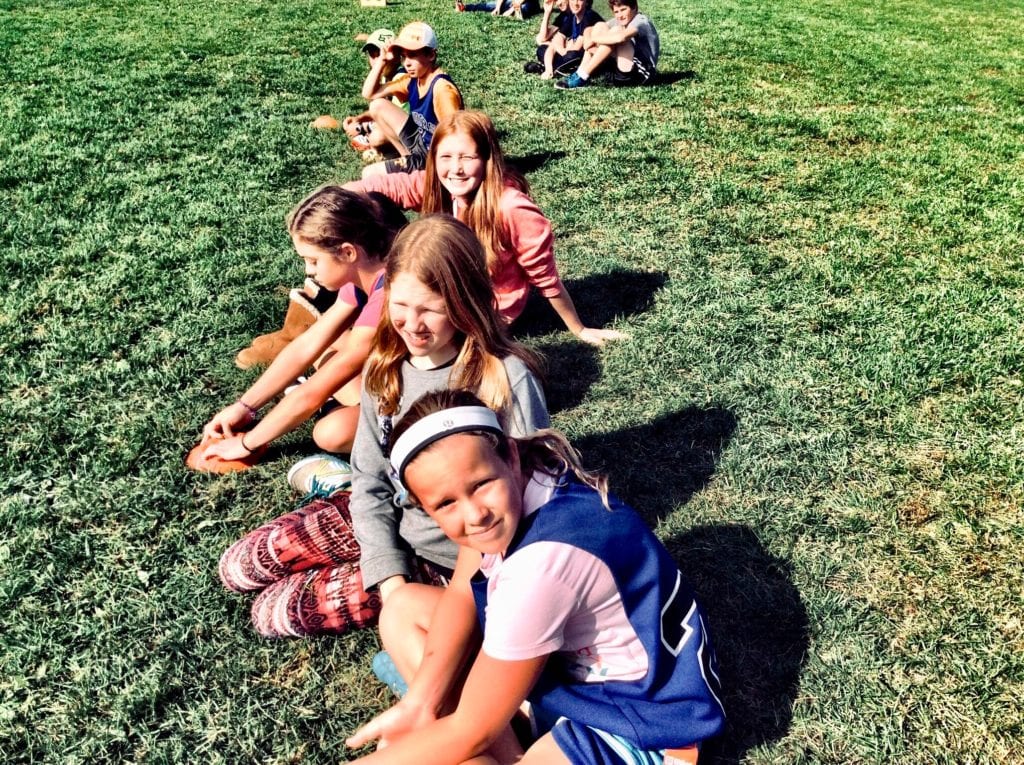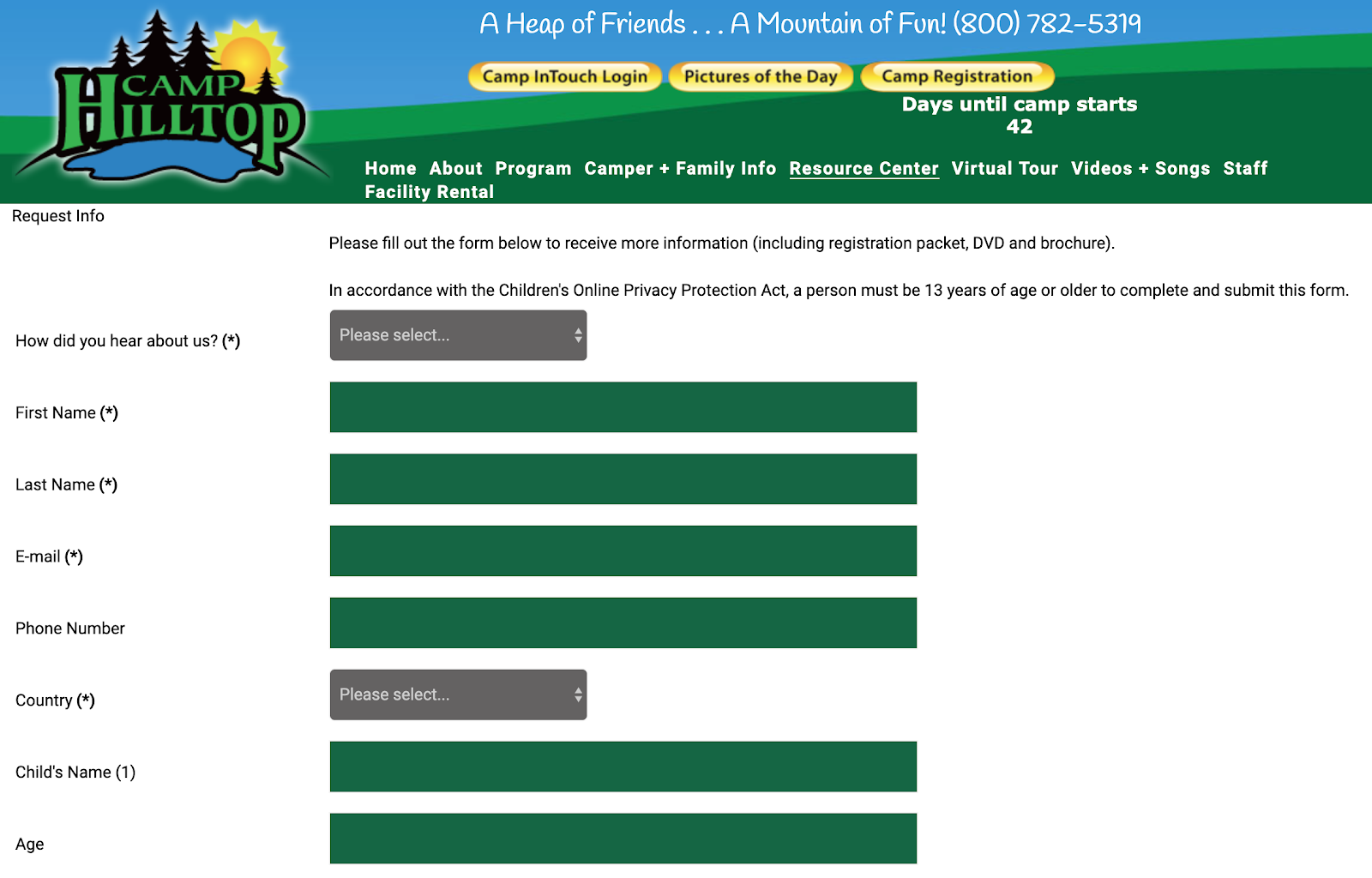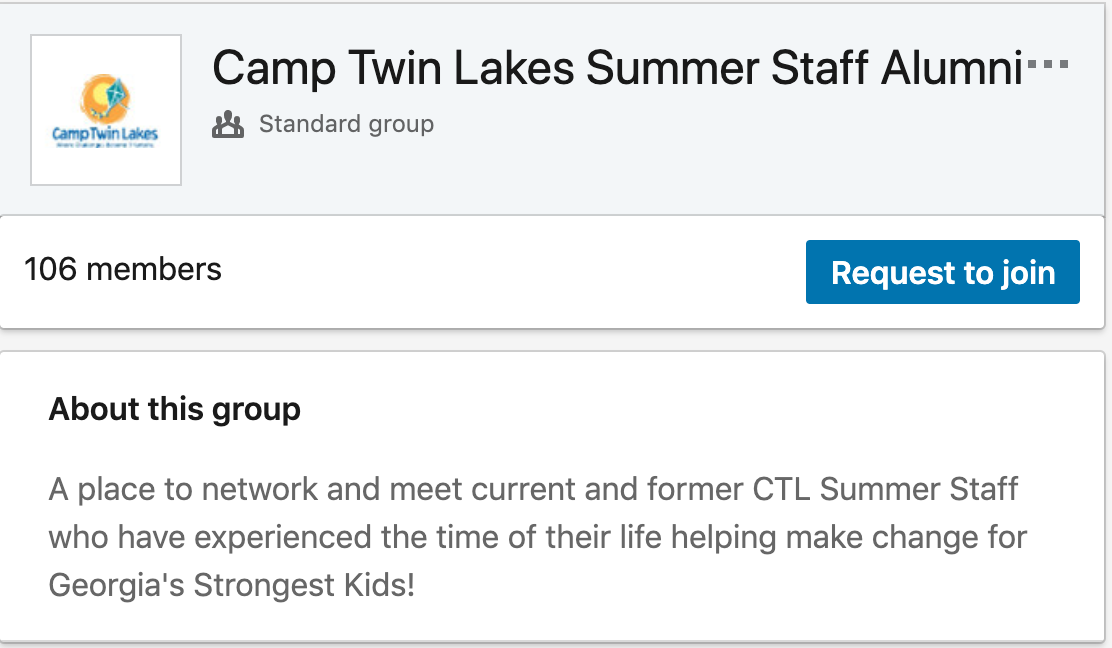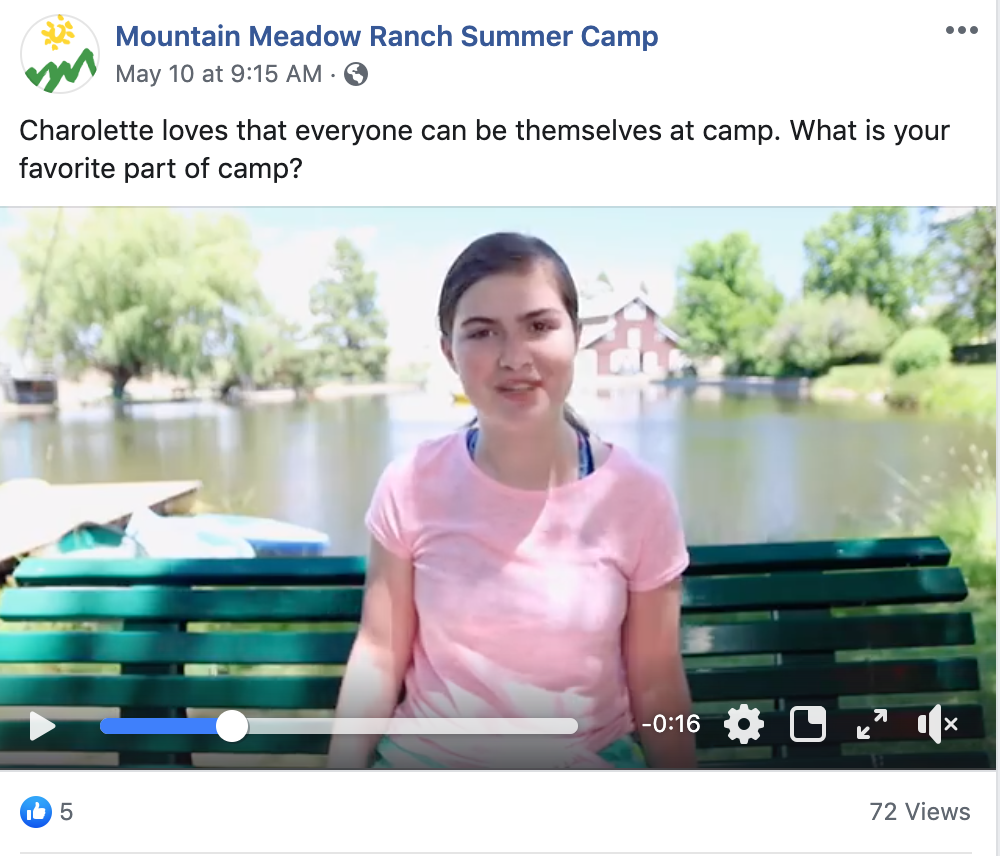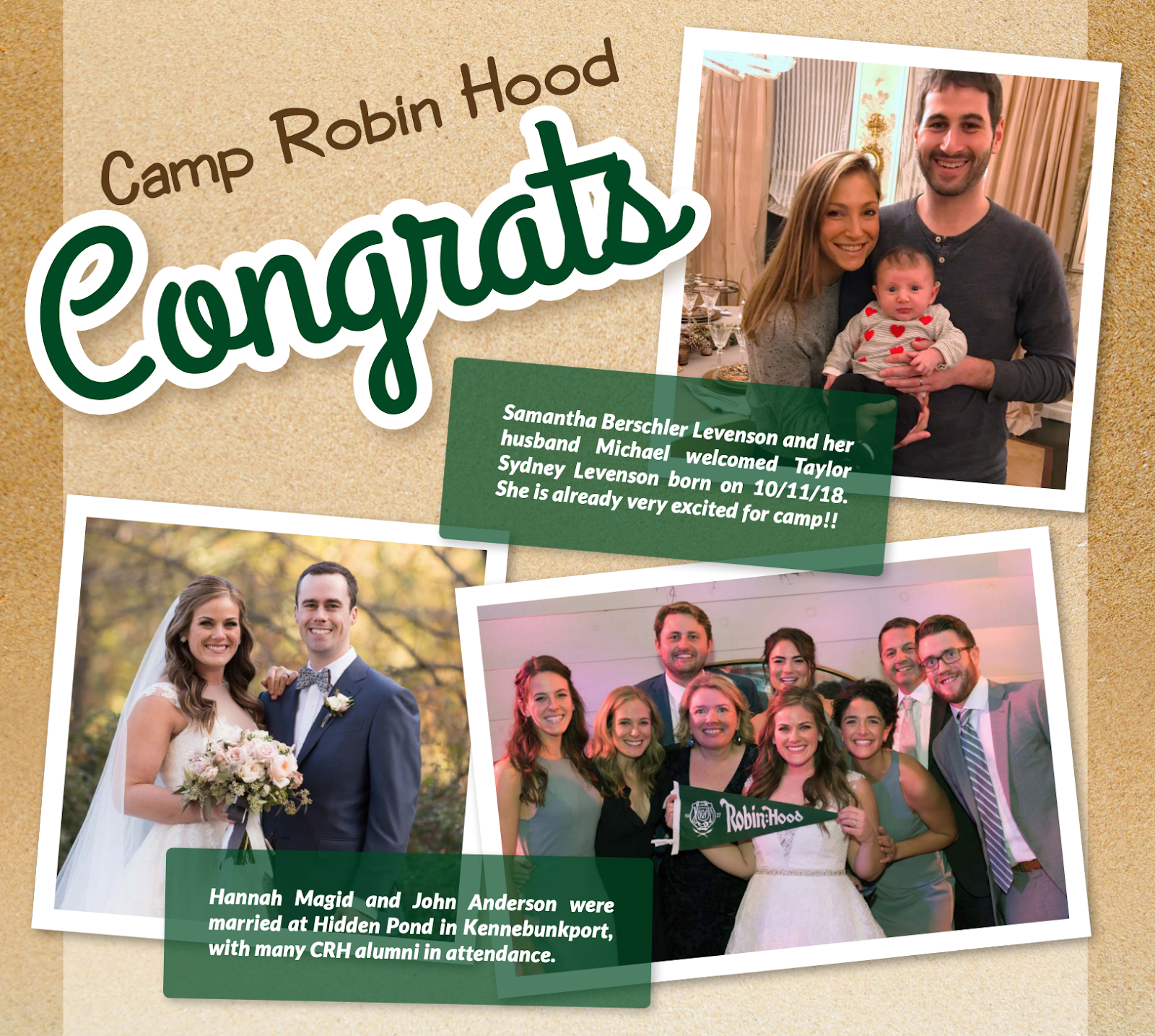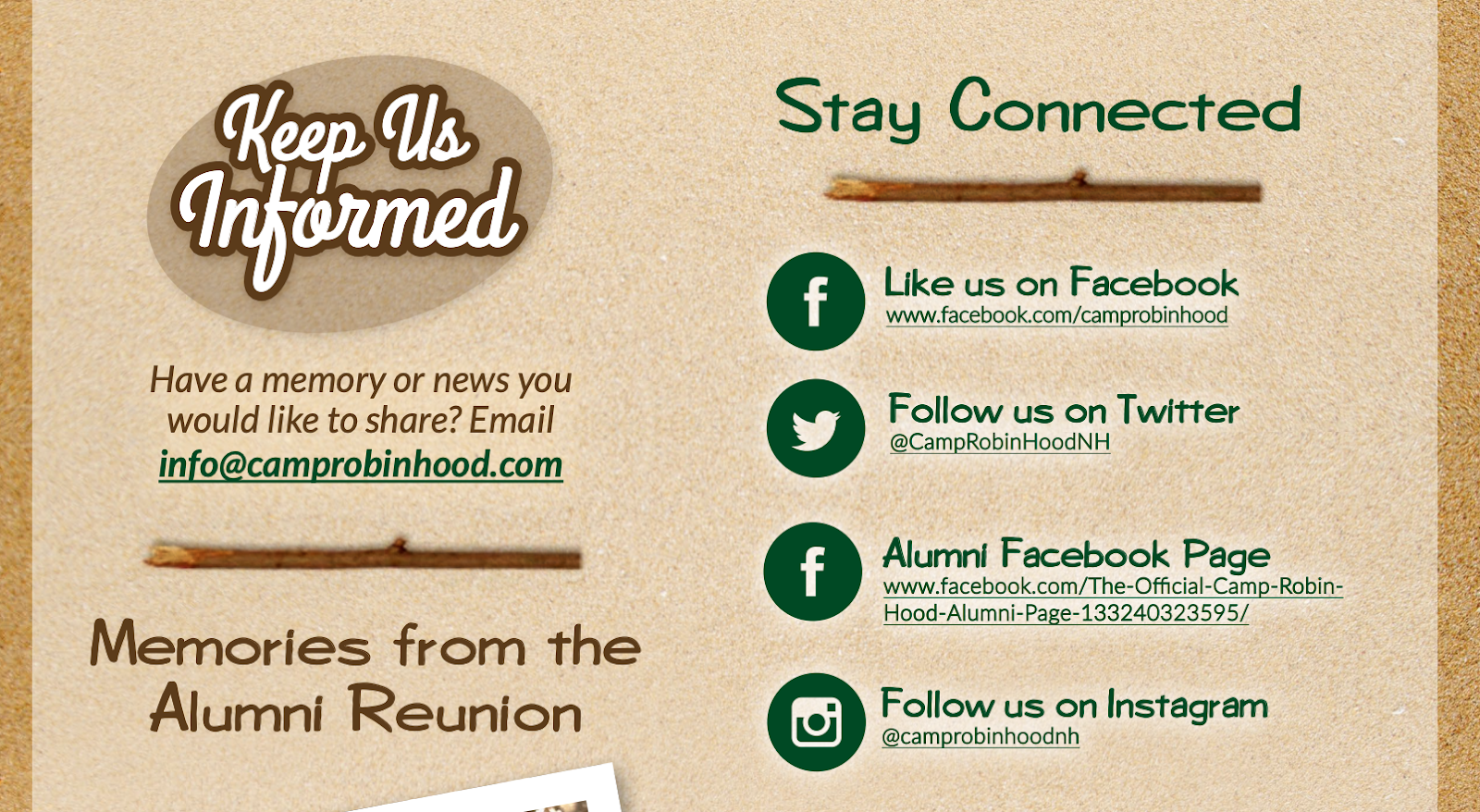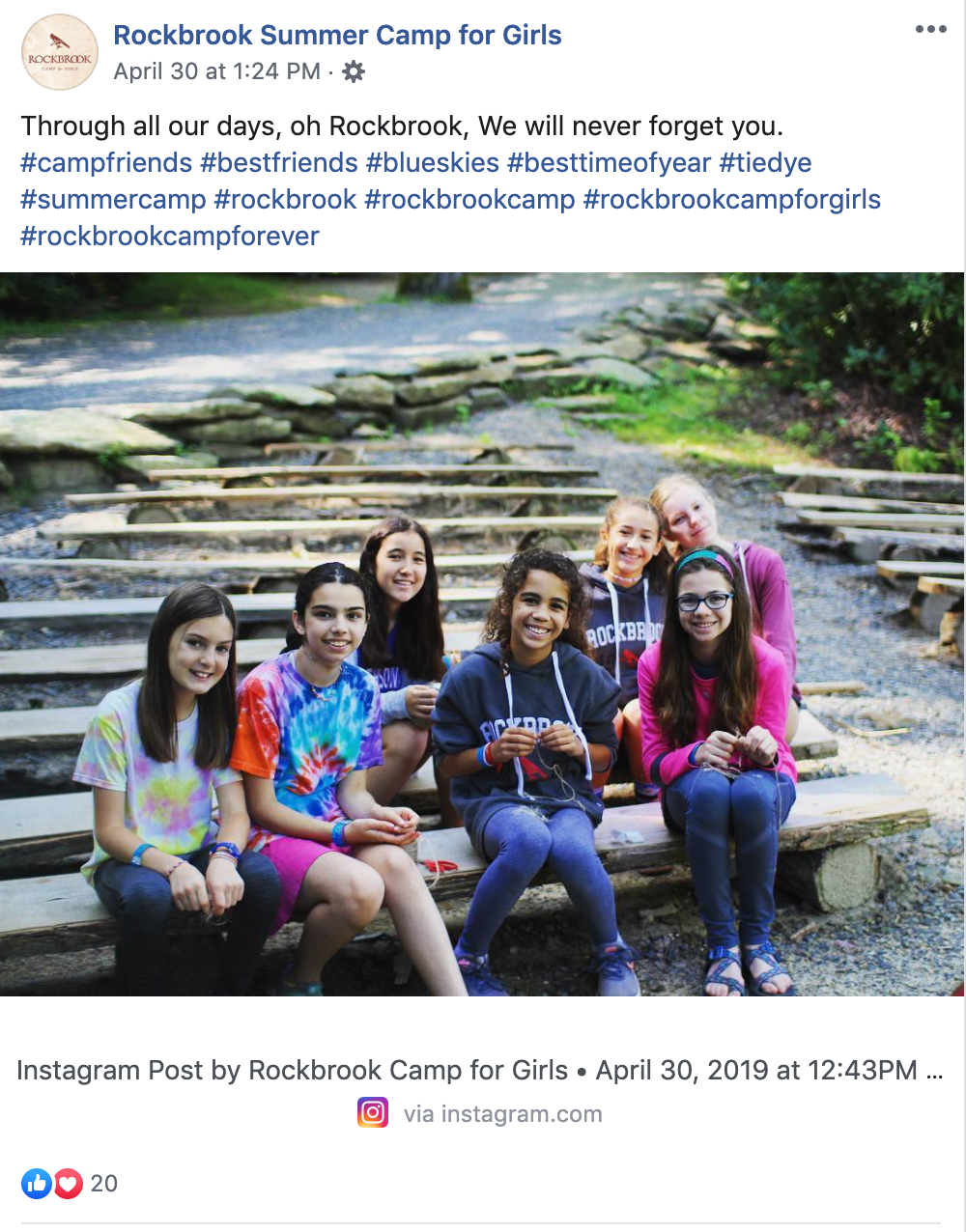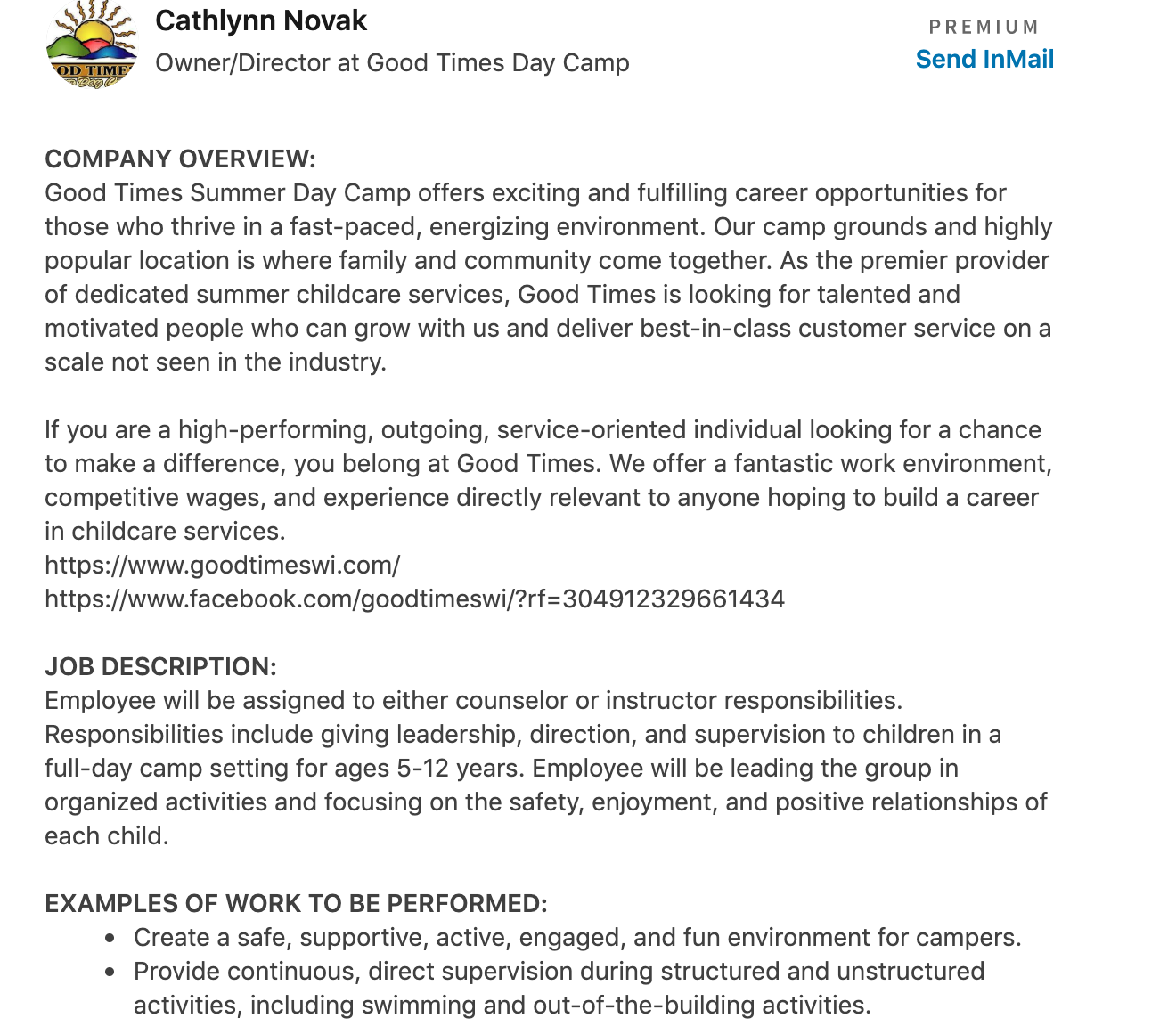Summer camp marketing is not a one-size-fits-all pursuit. In fact, the process of marketing for different summer camp audiences requires your tactics to be as varied and diverse as your supporters. If you’re like most summer camps, this means you’ll have to keep a bunch of balls in the air at once. After all, you’re marketing to kids, parents, students and staff, and more.
Each of these audience segments interacts with you for different reasons, uses different social media platforms, and relies on you for different information. That means you’ve got to identify marketing tactics that work for each and get comfortable enough with each to switch between them as needed.
Marketing for Different Summer Camp Audiences 101: Won’t One Tactic Work?
Imagine this: you’re going shopping with three other people. One is a twelve-year-old boy, one is a professional woman with a hectic job, and the last is a college student home for the summer. Now imagine that you have to find one single piece of clothing that suits them all. Sound impossible? Pretty close.
This is a good metaphor for summer camp marketing. While developing a single content marketing strategy that speaks to two or more audiences is possible, it’s very difficult, and it’s not going to fit everyone the way it should. If you want your strategy to succeed, you’ve got to tailor it to your individual audiences and their priorities.
Digital marketing has made this a bit easier, by making it relatively easy to create content tailored for different audiences, and even target audiences more precisely. But every marketer also knows to be aware that each of these populations responds to digital content differently.
Parents on the slightly older end of the spectrum…typically Gen Xers who are in their 40s or 50s, may have a variety of comfort levels with technology. Some will be tech-savvy and happy to use social media, while others will respond better to direct mail marketing.
Millennial parents, meanwhile, are tech-natives. They love social media, rely on their phones for information, and expect everything to be mobile-friendly. The key to appealing to both audiences is to understand what works for them, and to meet them there.
While this approach is more time-consuming and labor-intensive on the front end, it pays off in all the right ways.
Marketing Approaches That Work Different Summer Camp Audiences
Now that you know why it’s so important to take different marketing approaches for your various audience segments, let’s talk about how to do it.
Marketing to Parents
While camps are designed around kids, parents are the true target audience. Because parents are the ones paying camp fees and signing permission slips, they’re the ones your marketing must appeal to first.
Here are a few approaches that will work well for parents:
LinkedIn Marketing
LinkedIn is an excellent platform to use when marketing to parents. Right now, LinkedIn has more than 575 million monthly users, 40% of whom access the platform daily. LinkedIn is one of the most accessed social networking sites on the web.
LinkedIn is particularly popular among high net-worth professionals. In fact, the demographics of LinkedIn are much different than other social platforms – 61 million LinkedIn users are senior-level influencers and 40 million are in decision-making positions.
These things combine to make LinkedIn one of the best social media marketing platforms for content designed to appeal to parents.
How to use it: If you haven’t already, create a LinkedIn business profile for your camp. Use this profile to share updates, post content, and interact with parents of would-be and past campers. Keep in mind that LinkedIn is also a great place to foster secondary marketing connections. Use it to identify schools and other organizations your camp might partner with.
If you blog on your website, you might also want to consider using LinkedIn’s native publishing feature to write articles and share them on the platform. This is an excellent way to create thought leadership content and engage parents, while also boosting your page’s SEO value.
Newsletters
Newsletters are particularly effective when it comes time to market to parents. If you’ve never published a newsletter before, consider starting with one that appeals to your current and former campers.
While you want to market your summer camp year-round, you’ll see great results if you push the newsletter during the late winter and early spring, when parents are starting to make plans for summer break.
Depending on your priorities and marketing stack, you can publish a paper or digital newsletter. Swift Nature Camp, for example, publishes a simple e-newsletter that’s a great example to follow:

How to use it: Send out seasonal newsletters that update parents about your camp’s events. These publications should also push enrollment for the coming season. To widen the reach of your newsletter, include a share link at the bottom. This way, interested parents can share it with their friends, who may also have kids that would enjoy the camp.
If you are comfortable writing, that’s ideal. But if you’re not, don’t be put off. There are often other staff members you could tap, or freelancers, or even past campers that you could ask to take on the task. Just be sure to review the copy before you publish to make sure it’s true to your brand/camp identity.
Direct Mail
Think direct mail is a thing of the past? Think again. Today, 54% of consumers report that they want to receive mail from brands they like. Additionally, 56% of customers say print marketing is the most trustworthy kind of marketing. The same percentage of customers respond to direct mail by going online or visiting a physical business location.
Right now, the average ROI (return on investment) for direct mail is between 18-20%. In fact, direct mail is much more effective than email. While recipients only open 20-30% of email marketing messages, they open 80-90% of direct mail. Additionally, the response rate for direct mail is 3.7%, compared to 1% for email. With all this in mind, sending direct mail to camp families is a great way to promote re-engagement and new signups. In fact, it’s one of the most effective “marketing to parents” tactics.
How to use it: To get as much value as possible from direct mail, you may want to split your audience segments. For returning camp families, send out seasonal letters with sign-up forms and updates. To engage new campers and their families, start with your website. Publish a form that allows them to request a mailed information packet. Check out how Camp Hilltop does this on their website:
The packet you eventually send out should include educational material, brochures about your camp’s program and experiences, and a signup form.
In-Person Marketing at Schools and Events
Why not take your summer camp marketing into the real world? One excellent (and often overlooked way) to capture the attention of parents is to host a booth at school festivals, career fairs, and other in-person events focused on kids.
How to do it: If there’s a school or college you partner with on a regular basis, et up an information booth at an upcoming event. This gives you an opportunity to meet parents face-to-face and accept some sign-ups on the spot. It’s also a great way to build relationships in your community and spread the word about your camp.
Marketing to Alumni
Your summer camp alumni play an important role in your camp’s survival. Not only do they speak to the heritage of your camp, but they become important financial supporters and brand evangelists. Because of this, it’s essential to include them in your marketing efforts.
Here’s how:
LinkedIn Groups
If you’ve never created a LinkedIn Group before, doing so can be an excellent way to communicate with your camp alumni. Because LinkedIn is such a popular platform for decision-makers, starting a group for camp alumni is a great way to keep everyone in the loop, identify opportunities for your camp, and more.
Need some inspiration? Check out the Camp Twin Lakes alumni group on LinkedIn:
How to do it: Simply follow LinkedIn’s guide to create a group. Give your group a name, decide whether it should be private or public, and invite some alumni to get the ball rolling. Once the group is up and running, share some content to encourage conversation and connection. Consider taking it a step further by hosting an alumni event and using LinkedIn to share the news!
Social Media
Use platforms like Facebook and Twitter to share updates about your camp. While this approach isn’t as official as a dedicated LinkedIn group, it’s not one you can afford to overlook. After all, Facebook alone has 2.38 billion monthly active users, and tapping into that population will help you grow.
How to do it: There are dozens of ways to approach summer camp social media. No matter what you do, though, keep it natural and valuable.
The content you post should be relevant to your audiences. Post third-party articles, original content from your camp, and updates aimed at alumni and incoming campers alike. For an even more personalized approach, take a tip from Mountain Meadow Ranch Summer Camp, which uses its Facebook page to share camper profiles:
Publish An Email or Print Newsletter
Email or print newsletters work as well for alumni as they do for parents. For an example of a camp that does this well, consider Camp Robin Hood, which publishes “The WoodChuck.”
The newsletter is simple but nicely designed:
It offers updates on new projects:
Updates on previous campers:
And an invitation for all alumni to join the camp on social media:
How to do it: Keep your newsletter simple, relevant, and to-the-point. Camp Robin Hood’s newsletter is an excellent example of all those things. Remember that the point of your newsletter is information and connection.
Marketing to Campers
Even though parents are the ones signing the checks, campers are the ones who ultimately decide on your summer camp. If your camp’s going to be successful, campers have to want to come join your programs. Because of this, marketing to campers is a critical task, and not one you should overlook.
The great news about marketing to campers is that there are dozens of ways to do it. Here are a few to get you started:
Social Media
Marketing to campers is all about showcasing an experience. Fortunately, social media is an excellent way to do that. Take to platforms like Facebook, Instagram, and even Pinterest to appeal to campers and drive the excitement that leads to sign-ups.
How to do it: Get would-be campers looking forward to the summer by showcasing how much fun your camp can be. Check out how Rockbrook Summer Camp for Girls does this by posting images of camper packages before the season begins:
Rockbrook also does a great job of using their Facebook profile as a place to underscore the connections and friendships campers make during the program:
Pro tip: Want to make marketing to campers even easier? Do what Rockbrook has done and enable your camp Instagram account to post to Facebook, as well. Two birds with one stone!
Partner With Schools
Sometimes the campers find you, sometimes you find the campers! In addition to building a strong social media presence, partner with local schools to offer in-person educational opportunities. These in-person events get kids excited about your camp. To promote parent buy-in, make these events open to the whole family.
How to do it: Work with schools in your area to find out where your camp can weave itself in. Consider offering a short course on how to identify local wildflowers or start a fire, or opening your campgrounds to field trips. Host a booth at a school fair or end-of-year celebration. Another option is hosting invite-only parent/camper weekend, like Wilderness Horse Camp in Halfway, Oregon has done in years past:
No matter how you choose to do it, getting your camp and its counselors in front of would-be campers is the single best way to inspire excitement and encourage new campers to sign up.
Marketing to Counselors
Your counselors: they make your camp what it is. Without them, you wouldn’t have the programs or the personality your campers love so much. Whether you’re keeping in touch with return counselors or looking for new hires for the upcoming season, marketing to counselors is an important part of your summer camp strategy.
Here are a few ways to do it well:
Get Back on LinkedIn
If you need to hire a new counselor, LinkedIn is an excellent place to start. Interested counselors can search the platform for jobs and narrow according to location, required skill set, and more. While you could just post your opening on a job board, LinkedIn is a great place to find highly-qualified candidates from around the country.
How to do it: Use your camp’s LinkedIn page to post the job. Provide plenty of details about the position, the experience expected, and the culture of your camp.
To increase visibility, share your post on your social media platforms, as well. You can also mention that you’re looking for new counselors in your newsletter or email updates. If you’re lucky, one of your camp alumni might come back for the position!
Social Media
Social media is an excellent place to appeal to parents, alumni, campers, and counselors. In to fact, the approach is virtually the same across the board. To engage your audiences, you need to promote the experience of your camp.
How to do it: To get experienced counselors to hire on at your camp (or to encourage existing counselors share your content), showcase the things that make your camp different. This means lots of pictures of campers, photos of your buildings, videos of your activities, and testimonials from happy campers and families.
You can also use Instagram and Facebook to share live videos, offer behind-the-scenes peaks of your camp, and give would-be counselors a taste of what working with you is like.
The Best Summer Camp Marketing is Diverse
Summer camp marketing can feel, sometimes, like playing a game of whack-a-mole. After all, you’re trying to appeal to four different audiences at once, and the approach for each is slightly different. The thing about summer camp, though, is that it’s a positive experience for most people, which changes the marketing dynamic massively.
Marketing for different summer camp audiences doesn’t mean you’re trying to sell something. Instead, you’re showcasing the experience in a way each of your audience segments can understand. That’s an important and exciting task, and the approaches in this post can help you get the job done well.
Looking for ways to streamline your summer camp marketing? Consider investing in a summer camp marketing platform that can help you manage everything from a single dashboard. Contact CampMinder to schedule a demo today!
